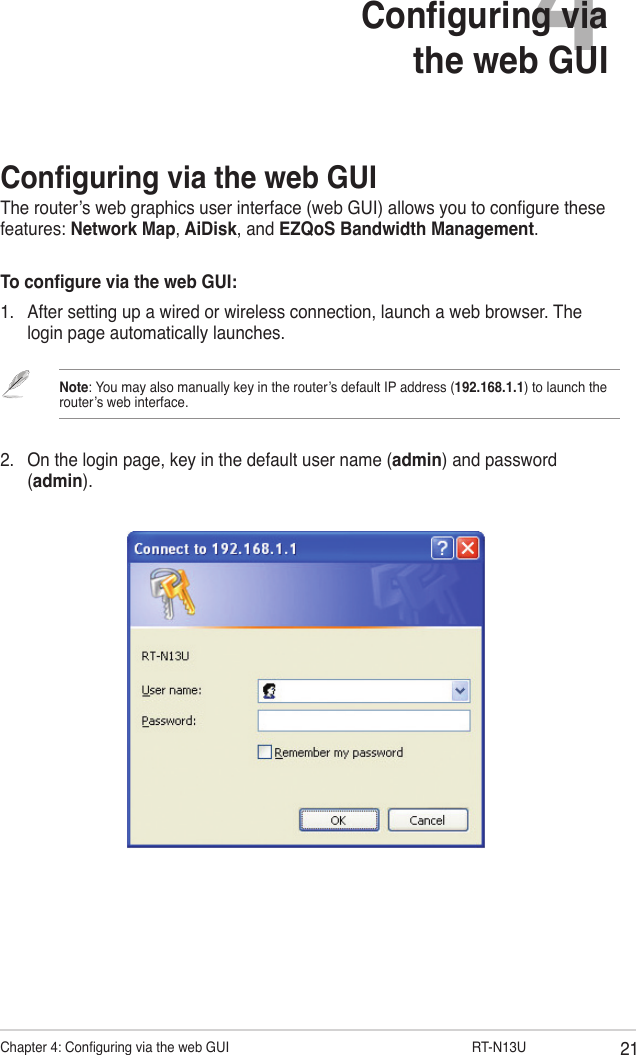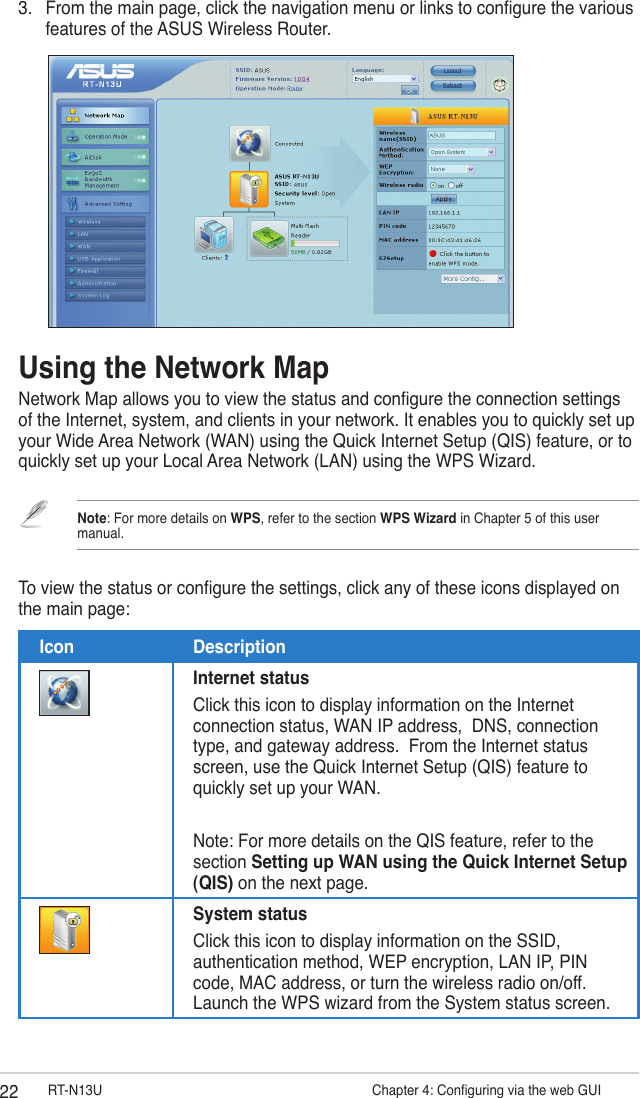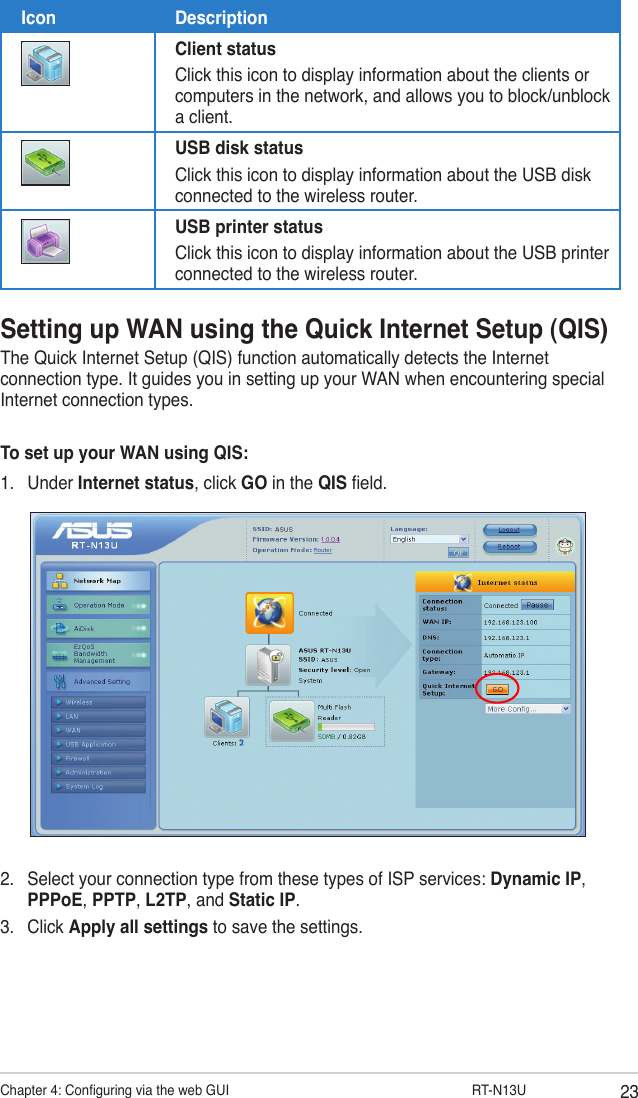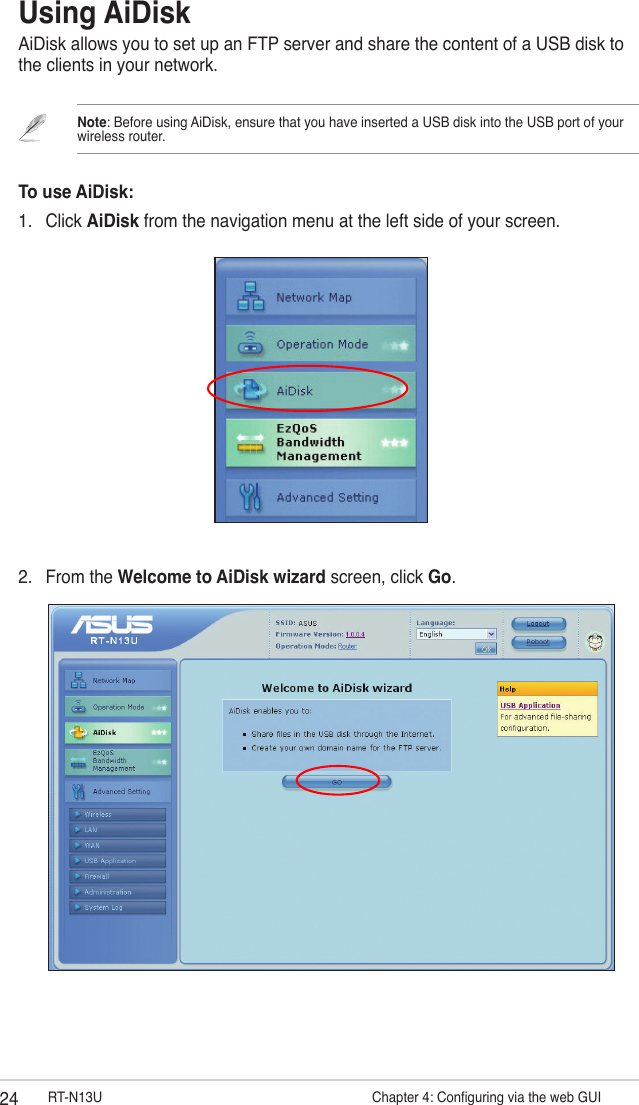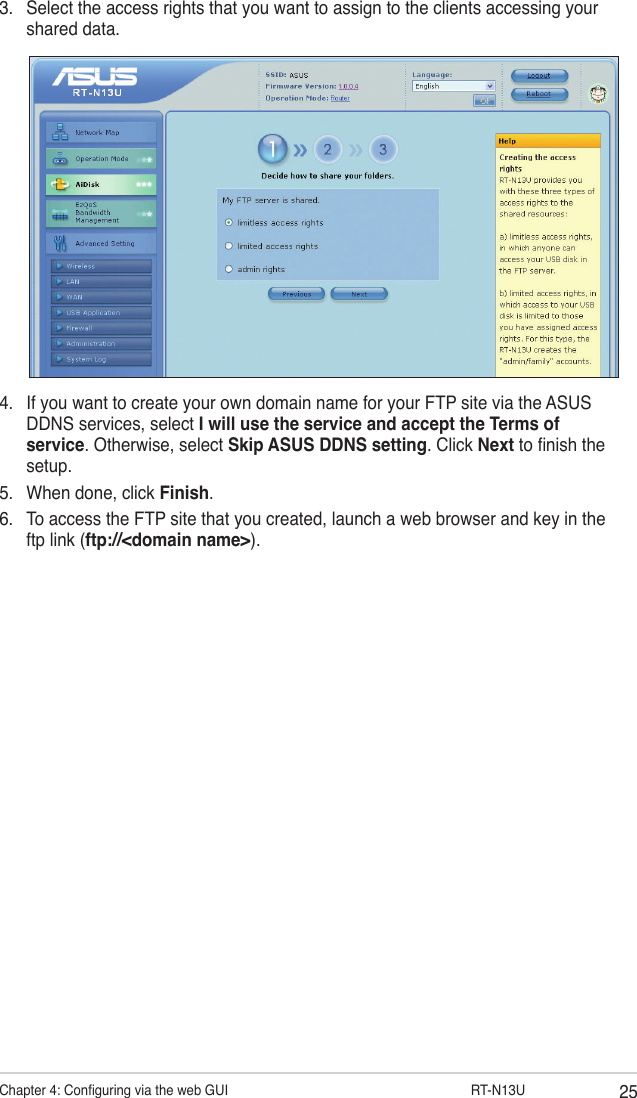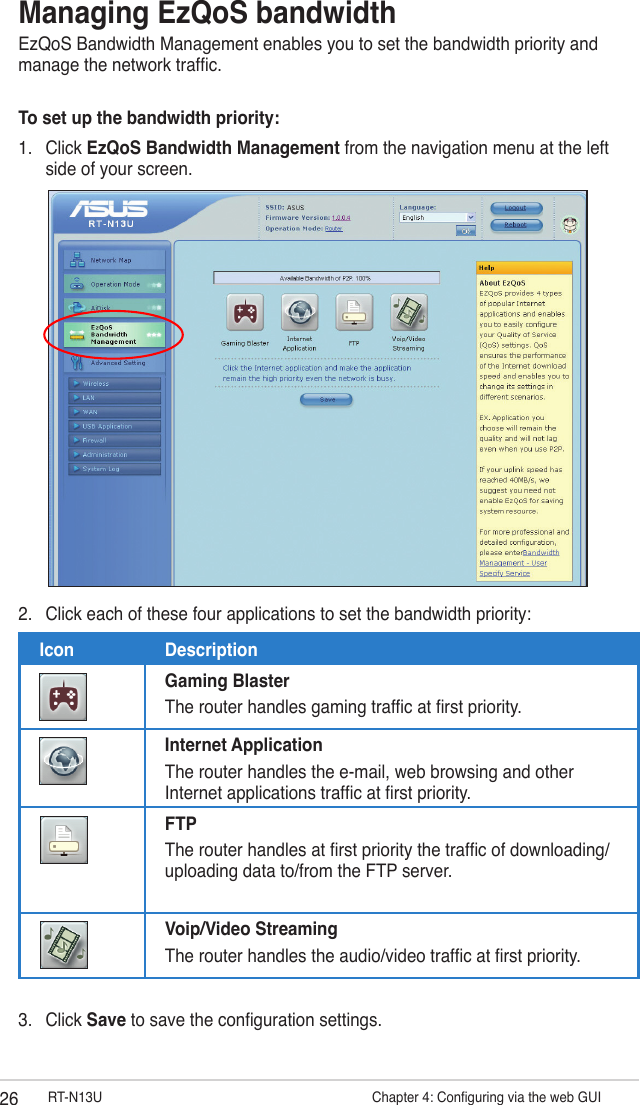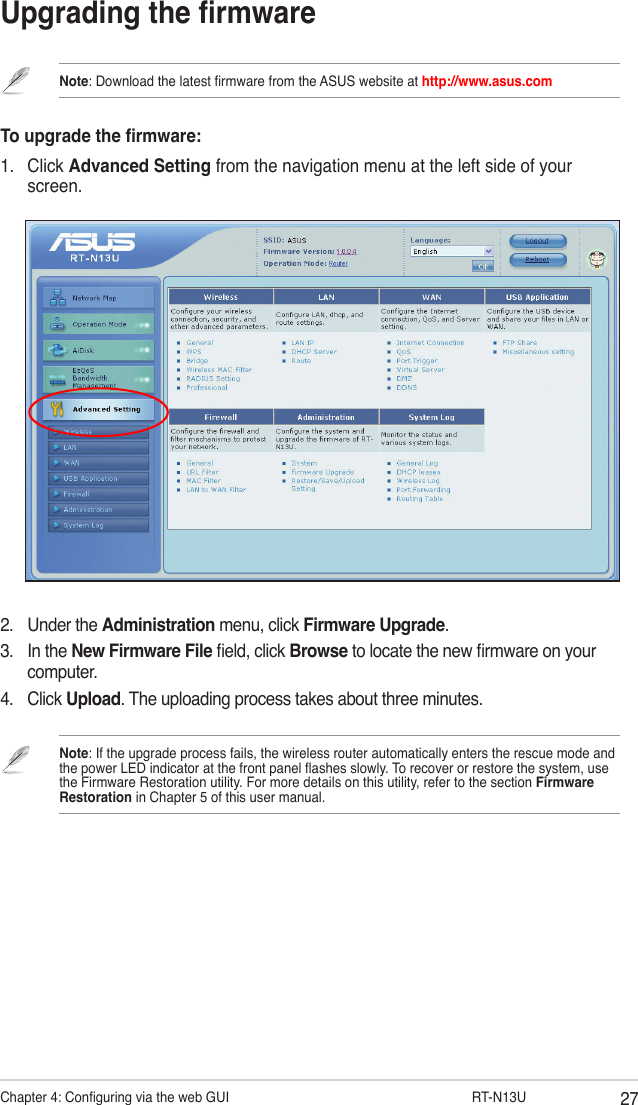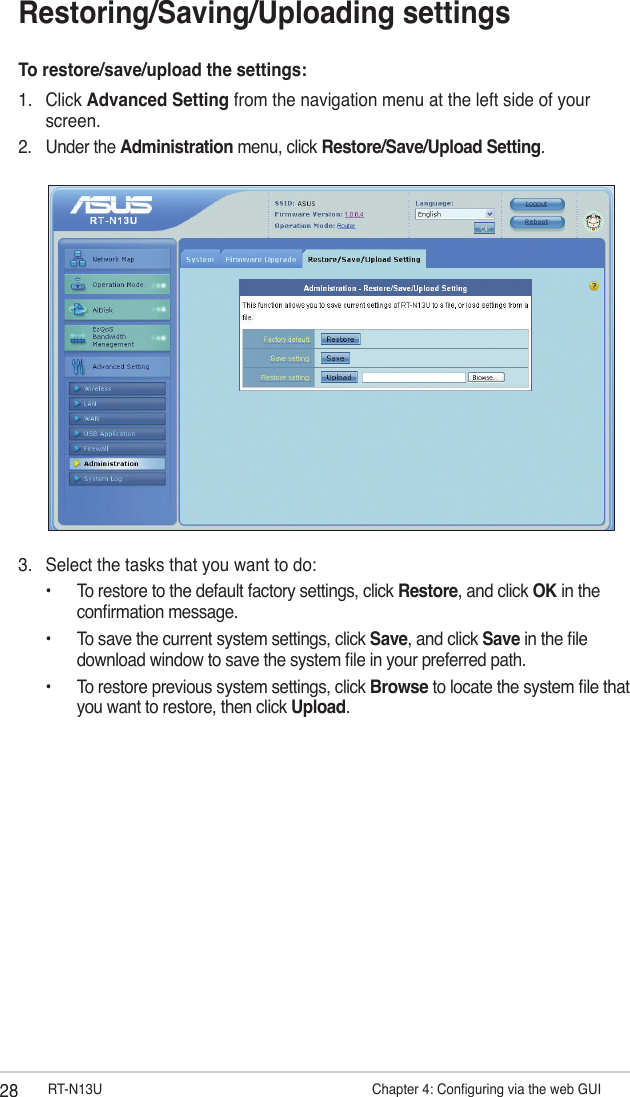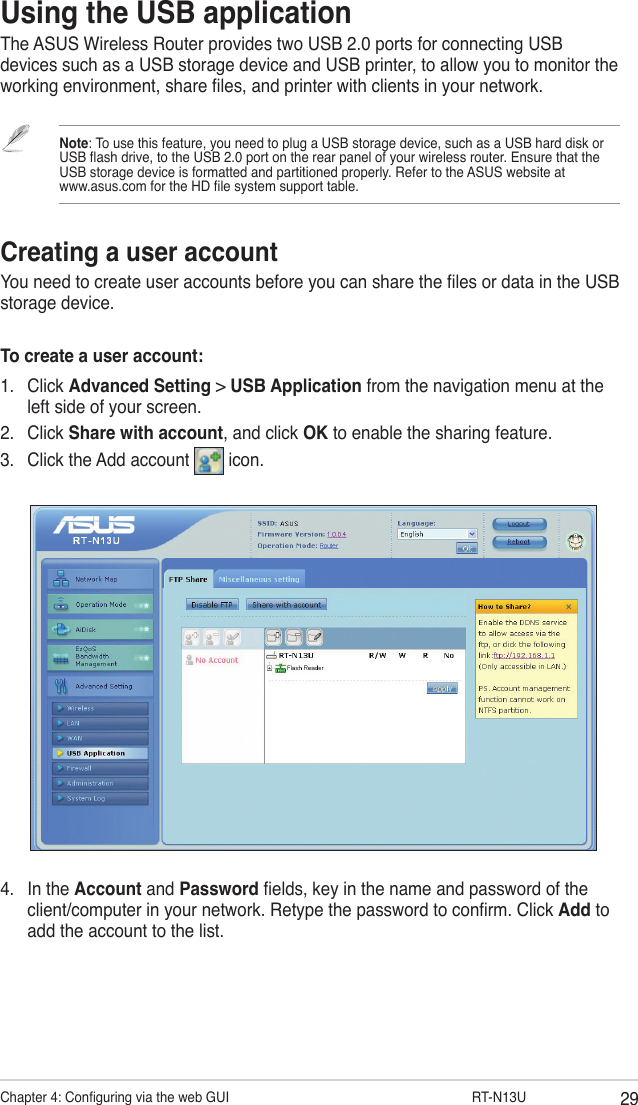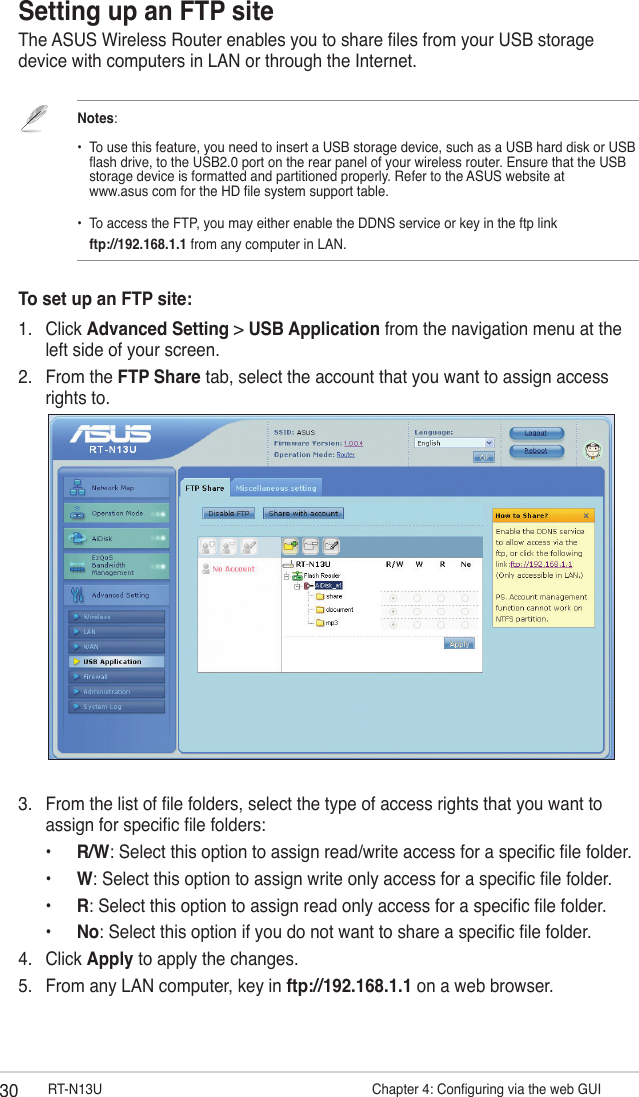ASUSTeK Computer RTN13U WIRELESS N ROUTER WITH ALL-IN-ONE PRINTER SERVER User Manual 2
ASUSTeK Computer Inc WIRELESS N ROUTER WITH ALL-IN-ONE PRINTER SERVER Users Manual 2
Contents
- 1. Users Manual 1
- 2. Users Manual 2
- 3. Users Manual 3
- 4. Users Manual 4
Users Manual 2
